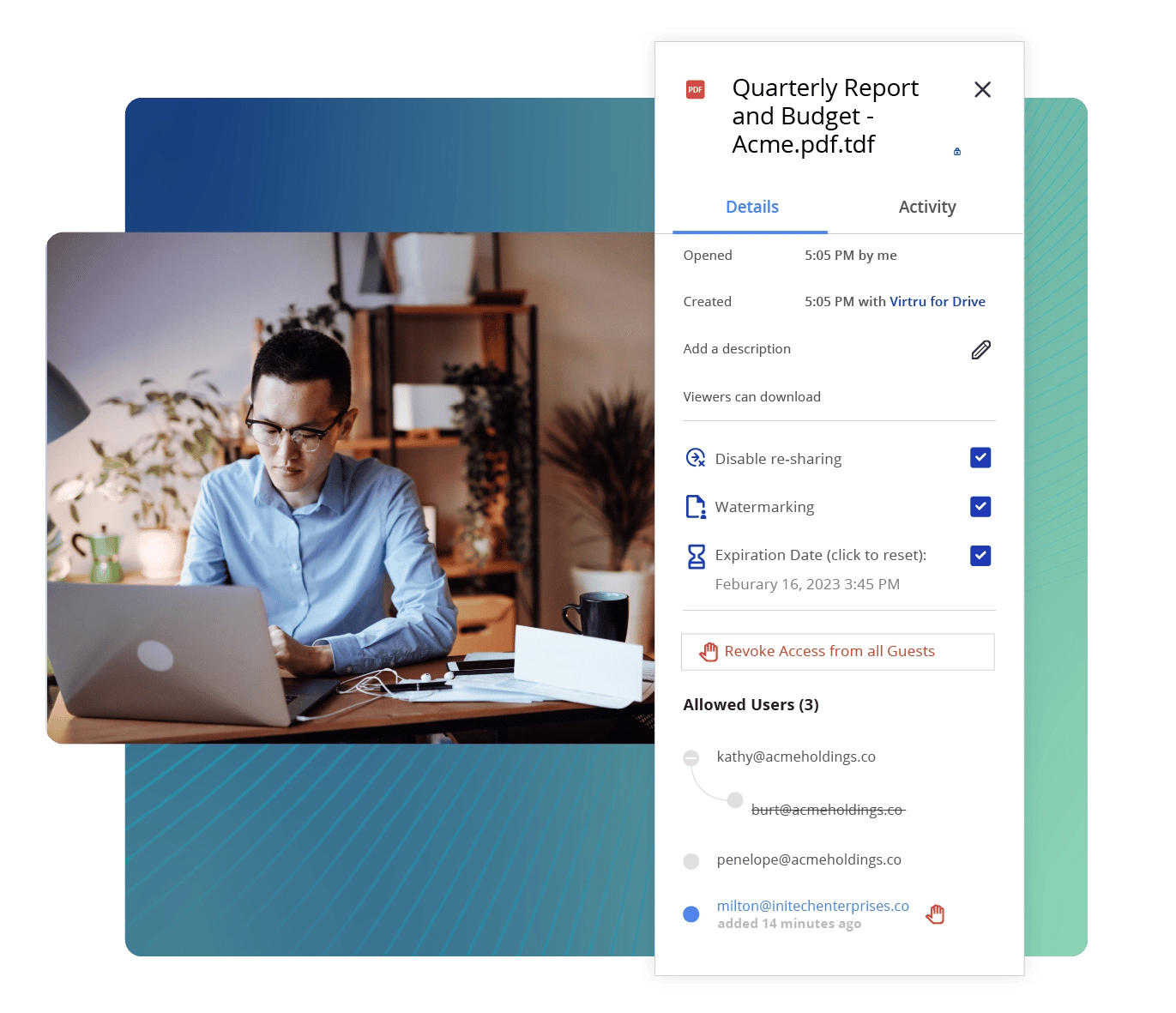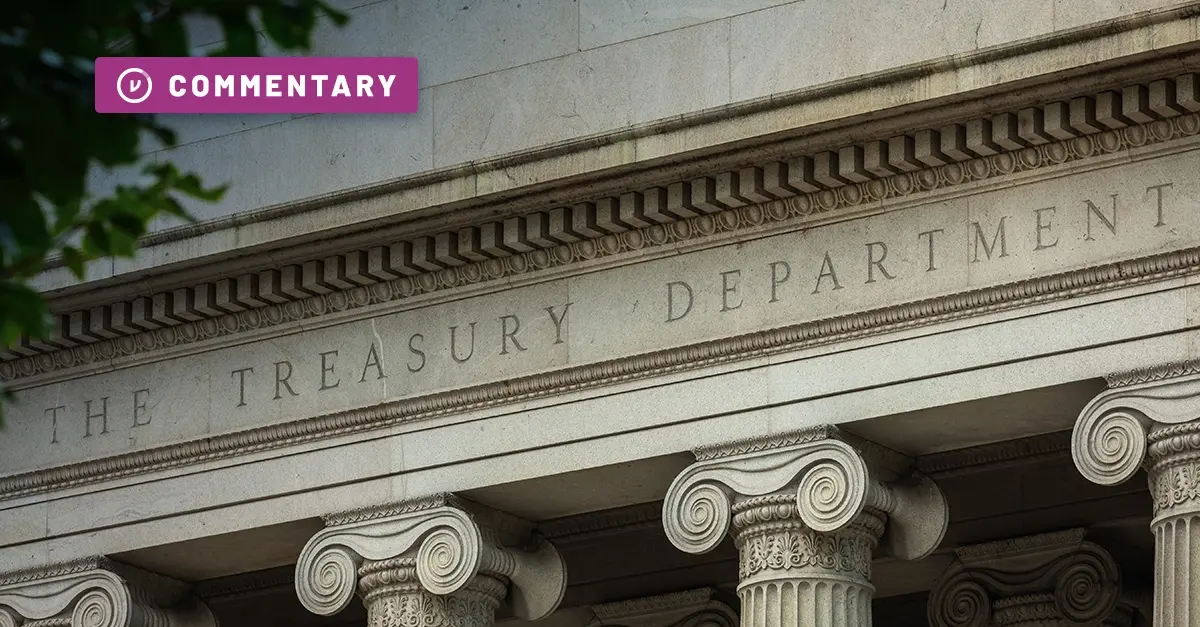

Sign Up for the Virtru Newsletter


What makes Virtru’s client- and server-side encryption tick? The Trusted Data Format (TDF), an open standard for securing all kinds of content. Invented by Will Ackerly, Virtru Co-Founder and CTO, the Trusted Data Format allows fine-grained access control for unstructured data, including emails, files, photos, videos, sensor data, and more.
Invented to protect the most sensitive information shared between intelligence agencies, the Trusted Data Format is available for anyone to use to protect private or proprietary data. It also forms the backbone of how Virtru works to encrypt and protect email messages and files.
They say necessity is the mother of invention, and the Trusted Data Format was invented based on a need for flexibility. Most encryption methods aren’t universal, so what works for images isn’t necessarily going to work for email, and what works for PDFs might not quite work for raw data. This makes any project that involves collaboration between multiple parties, with multiple file types, using multiple software platforms, difficult — especially if you’re dealing with sensitive data.
Nobody knows sensitive data quite like intelligence agencies. In his time working for the NSA, Will Ackerly noticed there was no easy way to send files from one intelligence agency to another. “One agency would produce reports, another might be producing images, and another might be producing more structured data, even weather data. In the past, each time you had something new to protect, there was a new way of locking it down. There wasn’t a generic wrapper,” he says. “I looked around at what was available publicly to see if there was a PDF or zip file that could achieve this goal. The answer was no, there wasn’t.”
Another challenge was to make the method accessible for a wide variety of users, says Ackerly. “A lot of what we built didn’t complement or work with mission needs. Often, it got in the way. A lot of neat crypto ideas didn’t make it into the field because the people getting the mission job couldn’t use it, both in intelligence agencies and the Department of Defense.”
So he took matters into his own hands — and the idea for the Trusted Data Format was born. “What I set out to do was write a wrapper that could solve these security issues in a way that could be used by anyone. My motivation is that if it was proprietary, or couldn’t be used by anyone, it wouldn’t be widely deployed.”
After developing the Trusted Data Format, Ackerly realized that the format offered a ton of value beyond government agencies, and sought to make it available for individual use. “I took that opportunity to leave the government and focus on a public effort to solve similar problems for individuals. Luckily, because TDF was public, and made no assumptions about people using it, it was a good candidate to turn into something anyone can use.” So, Will and the Virtru team brought TDF mainstream.
The Trusted Data Format is essentially a protective wrapper containing your content. Whether you’re sending an email message, an Excel spreadsheet or a cat photo, your files are encrypted and “wrapped” into a TDF file, which communicates with Virtru-enabled key stores to maintain access privileges. When the email recipient attempts to open the message and attachments, the TDF wrapper communicates with the Virtru server and verifies whether the receiver is eligible to access the data. Once verified, they can decrypt, open and read the files.
Not only does TDF facilitate encryption, but it also packs a punch with powerful access controls and policy enforcement that follow the data everywhere it moves.

Have you ever sent an email to the wrong person and wish you could take it back? (Or travel back in time?) The Trusted Data Format can't facilitate time travel, but it can do the next best thing: TDF lets you revoke data access and change permissions at any time you choose. You can also see who has opened an email or file, and add extra protections like watermarking and preventing download of files.
There are many encryption products out there, but Virtru and the Trusted Data Format stand alone in ease of use — a critical component of the user experience. After all, if a security tool is difficult to use, people simply won't use it: They'll find workarounds and potentially compromise sensitive information in the process.
With Virtru's tools, built on the Trusted Data Format, it's easy to encrypt, and it's easy for the right people to authenticate and decrypt the information that's been shared with them.
TDF was inspired by data-sharing challenges in the federal government, and it continues to deliver powerful capabilities to strengthen mission effectiveness and streamline secure communication for federal teams. The Virtru Data Security Platform applies TDF in versatile, mission-critical ways to enable public-sector organizations to protect the highly sensitive data entrusted to them.
Government adoption of TDF capabilities continues to grow, as Zero Trust strategies continue to advance in federal organizations, as well as state and local agencies, and throughout the commercial world. Zero Trust is on the rise, and the heart of TDF empowers data-level access decision and policy enforcement to ensure sensitive data can only be accessed by those with a need to know.
Strengthen Zero Trust Security with TDF
The principles that led to the invention of the Trusted Data Format — a strong, but flexible privacy and encryption standard that could be used easily by a wide variety of users — are the same factors that drove Virtru to create a streamlined, easy-to-use, encryption service. Virtru would later go on to leverage the TDF for innumerable use cases, including email encryption, encrypted large file transfer in a web browser experience, direct data protection integrations with apps like Zendesk, and server-side Gateway deployments that automate data protection behind the scenes.
The Trusted Data Format is powerful, and 8,000 organizations globally trust Virtru to safeguard their most sensitive information. To see how easily you can protect your files with the Trusted Data Format and improve compliance and privacy, request a demo from our team.

The editorial team consists of Virtru brand experts, content editors, and vetted field authorities. We ensure quality, accuracy, and integrity through robust editorial oversight, review, and optimization of content from trusted sources, including use of generative AI tools.
View more posts by Editorial TeamSee Virtru In Action
Sign Up for the Virtru Newsletter











Contact us to learn more about our partnership opportunities.